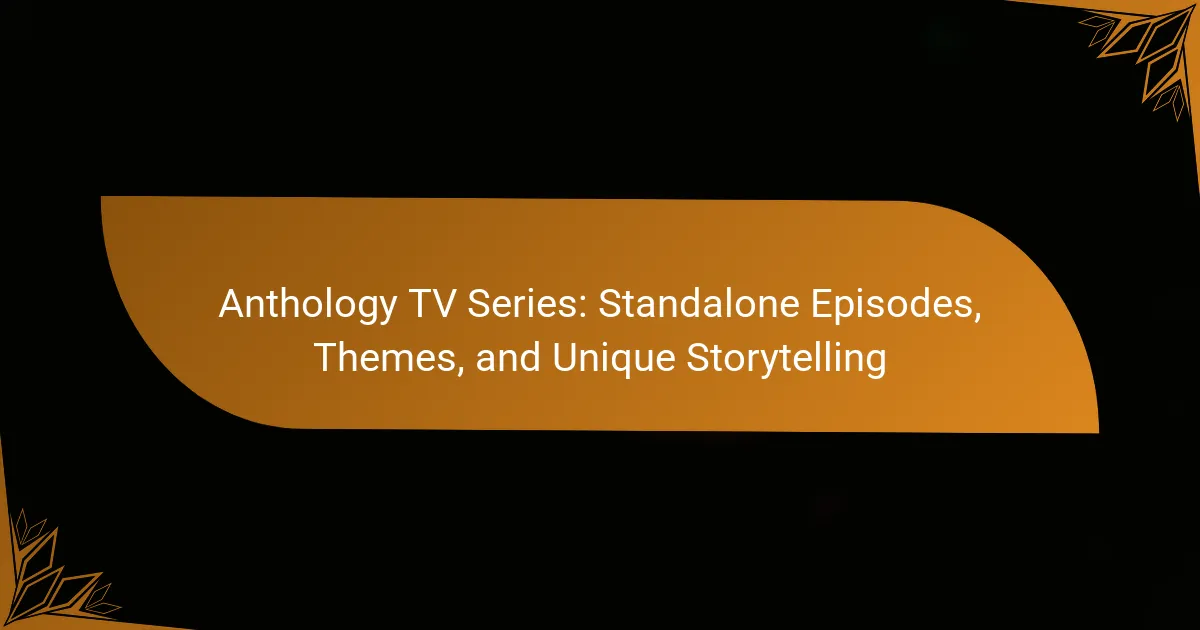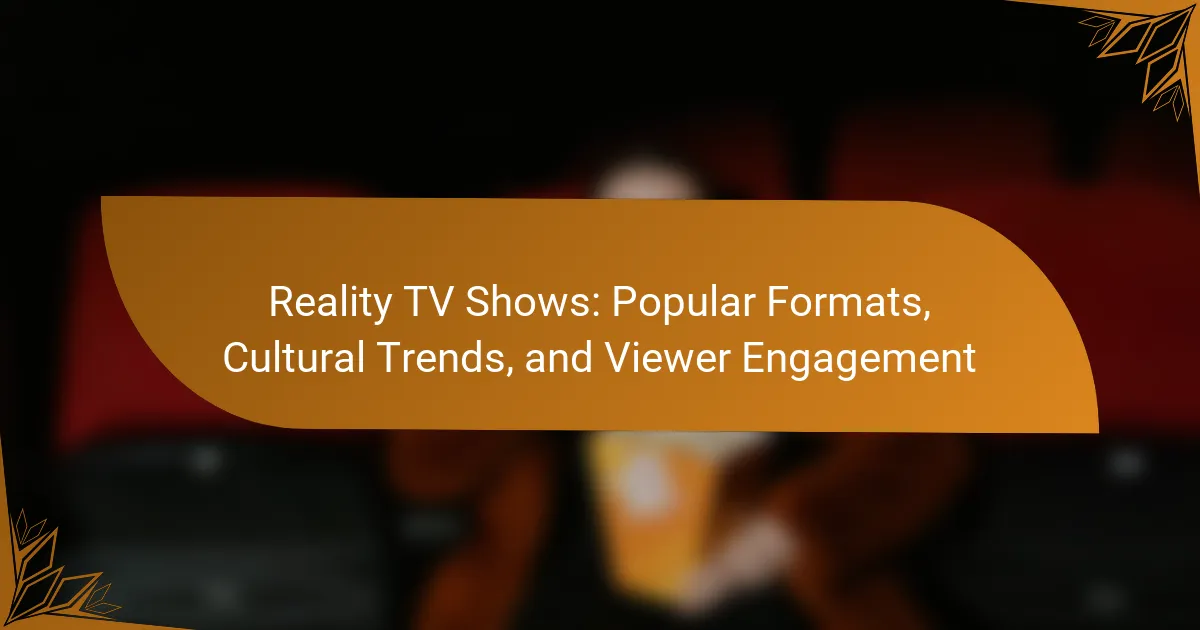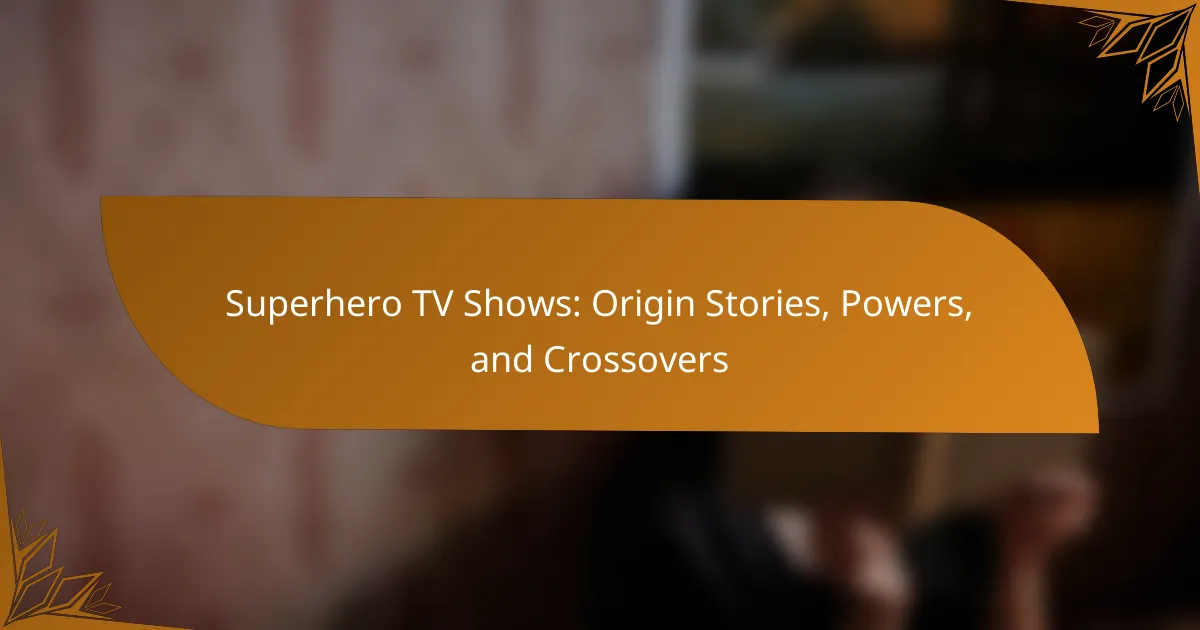Anthology TV series are television programs characterized by standalone episodes, each featuring distinct stories, casts, and themes. This format allows for a wide range of storytelling, often addressing complex moral dilemmas and societal issues. Notable examples include “The Twilight Zone,” which aired from 1959 to 1964 and focused on science fiction and horror themes, “Black Mirror,” which began in 2011 and explores dystopian futures, and “Fargo,” which presents a new storyline each season while maintaining thematic connections. The anthology format encourages creative experimentation and viewer engagement through its unpredictability and diverse narrative styles.

What are Anthology TV Series?
Anthology TV series are television programs that consist of standalone episodes. Each episode typically features a different story, cast, and theme. This format allows for diverse storytelling and exploration of various genres. Notable examples include “The Twilight Zone” and “Black Mirror.” These series often tackle different social issues or moral dilemmas. Anthology series provide a unique viewing experience with each episode. They have gained popularity for their creativity and innovation in storytelling.
How do Anthology TV Series differ from traditional series?
Anthology TV series differ from traditional series by presenting standalone episodes or stories. Each episode in an anthology often features a different cast, setting, and narrative. This format allows for a diverse range of themes and genres within a single series. In contrast, traditional series typically follow a continuous storyline with recurring characters. Anthology series, like “Black Mirror” or “The Twilight Zone,” explore various topics without the need for character development across episodes. This structure can attract viewers seeking fresh narratives each time. The distinct storytelling method of anthologies emphasizes creativity and experimentation in television.
What defines a standalone episode in an Anthology TV Series?
A standalone episode in an anthology TV series is a self-contained story. It does not require knowledge of other episodes to understand its plot. Each standalone episode typically features a unique cast and setting. The narrative is resolved within the episode’s duration. This format allows for diverse themes and genres. Viewers can watch episodes in any order. Notable examples include “The Twilight Zone” and “Black Mirror.” These series showcase different stories with distinct characters and conflicts.
How are characters and narratives developed in Anthology formats?
Characters and narratives in anthology formats are developed through standalone episodes, each presenting a unique story. Each episode typically features different characters, allowing for diverse character exploration. This format encourages writers to create distinct personalities and backstories tailored to each narrative. Themes often unify the episodes, providing a cohesive experience despite varied characters. Narratives are frequently driven by specific conflicts or moral dilemmas, engaging viewers in different ways. The anthology structure allows for experimentation with storytelling techniques, enhancing character depth. This approach has been effectively utilized in series like “Black Mirror” and “The Twilight Zone,” showcasing innovative character arcs and plots.
What themes are commonly explored in Anthology TV Series?
Anthology TV series commonly explore themes such as morality, identity, and societal issues. These series often tackle existential questions and human experiences. Each episode can present a different narrative, allowing for diverse storytelling. Common themes include fear, love, and the consequences of choices. Anthology series also delve into technology’s impact on society. They often reflect on historical events or speculative futures. The format allows for experimentation with genre and style. This thematic versatility is a hallmark of successful anthology series.
Why do Anthology TV Series often tackle social issues?
Anthology TV series often tackle social issues to reflect contemporary societal challenges. These series use standalone episodes to explore diverse narratives. This format allows for a focused examination of specific topics. Social issues often resonate deeply with audiences. They promote dialogue and awareness around pressing matters. For example, series like “Black Mirror” address technology’s impact on society. Similarly, “The Twilight Zone” tackled issues of race and morality. By presenting varied perspectives, anthology series engage viewers in critical thinking. This approach enhances the relevance and impact of the storytelling.
How do themes enhance the storytelling in Anthology formats?
Themes enhance storytelling in anthology formats by providing a cohesive framework. They connect standalone episodes through shared motifs, emotional undercurrents, or philosophical questions. This connection fosters deeper engagement from the audience. For instance, themes like love, loss, or morality can resonate across different narratives. They create a sense of unity, making the viewing experience more impactful. Additionally, themes can prompt viewers to reflect on broader societal issues. Anthology series like “Black Mirror” use technology as a recurring theme to explore human behavior. This thematic consistency enriches character development and plot depth. Thus, themes serve as the backbone of storytelling in anthologies.

What are the unique storytelling techniques in Anthology TV Series?
Anthology TV series utilize unique storytelling techniques that differentiate them from traditional series. Each episode typically presents a self-contained narrative. This allows for diverse themes and genres within a single series. Anthology series often explore complex moral dilemmas and societal issues. They provide a platform for experimentation with different storytelling styles and formats. The use of varied directors and writers contributes to unique artistic visions. This format can also enhance viewer engagement through surprise and unpredictability. Examples include “Black Mirror” and “The Twilight Zone,” which showcase distinct storytelling approaches in each episode.
How do pacing and structure vary in Anthology episodes?
Pacing and structure in anthology episodes vary significantly compared to traditional series. Anthology episodes often feature a self-contained narrative arc. This allows for varied pacing, ranging from quick, intense storytelling to slower, more contemplative narratives. Each episode can experiment with different structures, such as non-linear timelines or multiple perspectives. This flexibility enhances thematic exploration and character development within a limited runtime. For instance, the anthology series “Black Mirror” frequently shifts pacing and structure to reflect diverse technological themes. Each episode’s unique design keeps the audience engaged and allows for creative storytelling.
What role does the episode format play in storytelling?
The episode format plays a critical role in storytelling by structuring narratives into distinct segments. This format allows for focused storytelling, where each episode can explore a unique theme or concept. It promotes diversity in narrative styles, enabling different genres or tones within a single series. The standalone nature of episodes encourages self-contained stories, which can attract varied audiences. Additionally, this format facilitates character development across episodes, allowing for deeper exploration of themes. The anthology approach enhances viewer engagement by providing fresh content regularly. Historical examples, such as “The Twilight Zone,” demonstrate how the episode format can effectively convey complex ideas in a concise manner.
How do Anthology Series utilize different genres within episodes?
Anthology series utilize different genres within episodes by presenting standalone stories that explore diverse themes. Each episode can shift between genres such as horror, science fiction, drama, or comedy. This format allows creative flexibility and keeps the audience engaged. For instance, “Black Mirror” often combines elements of dystopian fiction with dark humor. Meanwhile, “The Twilight Zone” blends fantasy with social commentary. This genre diversity enhances storytelling and broadens viewer appeal. By experimenting with various styles, anthology series can address complex issues in unique ways.
What impact do Anthology TV Series have on audiences?
Anthology TV series significantly impact audiences by offering diverse storytelling experiences. Each episode presents a unique narrative, allowing viewers to explore different themes and genres. This format fosters a sense of unpredictability and excitement. Audiences often appreciate the variety, as it caters to different tastes. Anthology series can also provoke thought and discussion on complex issues. For instance, shows like “Black Mirror” challenge societal norms and technology’s role. Research indicates that viewers engage more deeply with standalone stories, as they can reflect on each episode independently. This engagement enhances emotional connections to the content. Overall, anthology series enrich the viewing experience through innovation and thematic exploration.
How do standalone episodes affect viewer engagement?
Standalone episodes enhance viewer engagement by providing accessible entry points for new audiences. They allow viewers to enjoy a complete story without needing prior knowledge of the series. This format can attract casual viewers who may not commit to a full season. Research shows that anthology series often experience higher viewer retention rates due to this appeal. Standalone episodes can also spark discussions and social media interactions, increasing the show’s visibility. For example, series like “Black Mirror” have successfully utilized standalone episodes to engage diverse audiences. This approach keeps the content fresh and encourages viewers to return for more.
What are the emotional responses elicited by Anthology storytelling?
Anthology storytelling elicits a range of emotional responses, including empathy, nostalgia, and surprise. Each standalone episode often presents unique characters and narratives. This structure allows viewers to connect deeply with diverse experiences. Empathy arises as audiences relate to individual characters’ struggles and triumphs. Nostalgia can be triggered by themes or settings that resonate with personal memories. Surprise often occurs due to unexpected plot twists or endings. Research indicates that such emotional engagement enhances viewer satisfaction. A study by Green and Brock (2000) in “Transportation Theory” shows that narrative transportation increases emotional responses.

What are some notable examples of Anthology TV Series?
Notable examples of anthology TV series include “The Twilight Zone,” “Black Mirror,” and “Fargo.” “The Twilight Zone” originally aired from 1959 to 1964. It features standalone episodes with science fiction and horror themes. “Black Mirror,” created by Charlie Brooker, began in 2011 and explores dystopian futures through individual stories. “Fargo,” inspired by the Coen brothers’ film, started in 2014 and presents a new storyline each season while maintaining thematic connections. Each of these series exemplifies unique storytelling through distinct narratives and characters.
Which Anthology TV Series have received critical acclaim?
“Black Mirror” is an anthology TV series that has received critical acclaim. It explores contemporary issues through standalone episodes. Each episode presents unique narratives and themes. The series has won several awards, including multiple Primetime Emmy Awards. “The Twilight Zone” is another acclaimed anthology series. It is known for its innovative storytelling and cultural impact. “Fargo” also stands out, earning praise for its writing and performances. These series are frequently highlighted in discussions about the best anthology shows in television history.
What unique elements set these acclaimed series apart?
Acclaimed anthology TV series are distinguished by their standalone episodes and diverse themes. Each episode tells a self-contained story, allowing for varied narratives and genres. This format enables exploration of different characters and settings without continuity constraints. Unique storytelling techniques, such as non-linear narratives and unexpected twists, enhance viewer engagement. High production values and cinematic quality often elevate these series. Notable examples include “Black Mirror” and “The Twilight Zone,” which tackle contemporary issues through speculative fiction. The ability to address societal themes in a single episode format sets these series apart from traditional storytelling methods.
How can viewers choose the best Anthology TV Series to watch?
Viewers can choose the best anthology TV series by considering the themes, storytelling style, and episode quality. They should look for series that have received critical acclaim or audience recognition. Checking ratings on platforms like IMDb or Rotten Tomatoes can provide insights into overall reception. Reading reviews from trusted sources can help identify standout episodes or unique narratives. Exploring different genres within anthologies can also enhance the viewing experience. Lastly, personal preferences for specific topics or storytelling methods should guide their choices.
What factors should viewers consider when selecting an Anthology series?
Viewers should consider the themes and genres of the anthology series. Different series explore various subjects, such as horror, drama, or science fiction. The storytelling style is also crucial. Some series focus on character-driven narratives, while others emphasize plot twists. Viewer preferences for episode length and structure matter too. Some anthologies feature short episodes, while others have longer, more in-depth stories. The reputation of the creators and writers can influence the selection. Established names often signal higher quality content. Lastly, viewer reviews and ratings provide insight into the series’ overall reception. High ratings typically indicate a well-received anthology.
How can thematic preferences guide viewing choices in Anthology TV Series?
Thematic preferences significantly guide viewing choices in Anthology TV Series. Viewers often select series based on themes that resonate with their interests. For instance, some may prefer horror themes, while others might gravitate towards comedy or drama. This alignment with personal preferences enhances viewer engagement and satisfaction. Research indicates that thematic coherence in anthology series can lead to higher viewer retention rates. A study by the University of California found that audiences are more likely to binge-watch series that align with their preferred themes. This demonstrates that thematic preferences play a crucial role in driving viewership decisions.
Anthology TV series are television programs characterized by standalone episodes that feature different stories, casts, and themes, allowing for diverse storytelling. This article explores the unique format of anthology series, highlighting their differences from traditional series, the development of characters and narratives, and the themes commonly addressed, such as morality and societal issues. Additionally, it examines the impact of anthology storytelling on audience engagement and emotional responses, as well as notable examples of acclaimed series. Viewers are guided on how to select the best anthology series based on thematic preferences and storytelling styles.


